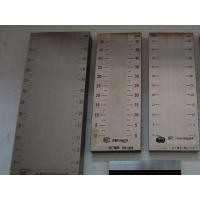High-Precision Color Tester for Accurate Coating Color Measurement
and Quality Control
Product Description
A Color Tester is a specialized instrument designed to measure and assess the
color of various materials, ensuring that they meet the required
specifications in industries like coatings, textiles, plastics, and
more. By providing accurate and reliable color readings, a Color
Tester helps maintain product consistency, improve quality control,
and ensure color uniformity across batches.
Working Principle
The Color Tester operates by analyzing the reflection or transmission of light from
the object’s surface. It measures the color by capturing the
wavelengths of light that are absorbed and reflected. Using
advanced sensors and color science, the tester compares the
measured color against predefined color standards or databases,
providing quantitative results in terms of color values such as CIE
Lab*, RGB, or other standardized systems. This allows manufacturers
to precisely evaluate and match colors with minimal human error.
Applications
- Paint and Coatings Industry: Used for checking paint consistency and color quality on metal,
plastic, and wooden surfaces.
- Textile Industry: Essential for ensuring fabric colors match desired specifications
and customer requirements.
- Plastic Manufacturing: Helps assess color uniformity in plastic products, ensuring
consistent shades.
- Automotive Industry: Utilized to test paint and coating colors for vehicles, ensuring a
perfect match for the desired shade.
- Food & Beverage Packaging: Ensures that packaging colors remain consistent and align with
branding guidelines.
Key Features and Advantages
- Accuracy and Precision: Provides highly accurate color measurements with minimal
variations.
- Easy to Use: Simple operation with intuitive interfaces, making it
user-friendly for both professionals and beginners.
- Versatility: Suitable for a wide range of materials, including solid,
transparent, and reflective surfaces.
- Real-Time Results: Instant feedback on color readings allows for immediate corrective
action if needed.
- Portable and Compact: Lightweight design for easy handling and portability, ideal for
on-site inspections.
- Advanced Calibration: Equipped with auto-calibration features to ensure long-term
accuracy.
Usage Notes and Considerations
- Surface Preparation: Ensure the surface of the material being tested is clean and free
of contaminants, as dirt, oil, or residues can affect color
readings.
- Lighting Conditions: Test in consistent lighting conditions to avoid discrepancies
caused by varying light sources.
- Calibration: Regular calibration of the color tester is necessary for
maintaining its accuracy over time.
- Battery Care: For portable models, ensure that batteries are charged or replaced
as needed to avoid power interruptions during use.
- Maintenance: Clean the sensor lens and the device regularly to avoid dust
buildup, which could affect the color readings.
The Color Tester is an essential tool for industries that require precise color
measurement and consistency. It enhances product quality,
streamlines production processes, and ensures that final products
meet customer expectations. Whether you're in manufacturing,
quality control, or research, investing in a Color Tester is a
smart choice for improving accuracy and efficiency in color
management.
Support and Services
We will provide the following technical support and services for
all products under the Jingtu Paint brand.
- Assistance with product installation and setup
- Troubleshooting and problem solving
- Guidance on proper use and maintenance
- Training and education on product features and functionality
- Regular software updates and patches
- Integration support with other systems or software
QA
1. Can the Color Tester be used for both solid and transparent
materials?
Yes, most Color Testers are versatile and can be used on a variety
of materials, including solid, transparent, and reflective
surfaces. For transparent materials like glass or films, the tester
uses specific light sources and sensors to measure the color
accurately without distortion. However, for materials with a high
gloss or reflective surface, additional calibration or special
accessories may be required to ensure accurate readings.
2. Is the Color Tester portable and easy to use for field
applications?
Yes, many Color Testers are designed to be portable and easy to
operate, making them ideal for field use. They typically feature
compact, lightweight designs that allow for convenient transport.
These devices come with intuitive interfaces, often with a simple
touch screen or button controls, making them accessible even for
users with little technical experience. Some models also include
built-in rechargeable batteries, allowing for extended use in
remote locations or on production lines.
3. How often does the Color Tester need to be calibrated?
Calibration frequency depends on usage conditions, but most Color
Testers should be calibrated regularly to ensure continued
accuracy. For frequent use in high-volume environments, calibration
may be required every 6 to 12 months. Many models have an
auto-calibration feature or allow for quick calibration with a
reference standard. Calibration should also be performed after the
device has been transported, exposed to extreme conditions, or
after any maintenance work.
4. What types of industries typically use Color Testers, and what
are the main benefits?
Color Testers are widely used across industries such as automotive,
paints and coatings, textiles, plastics, packaging, and consumer
goods. The main benefits include ensuring consistent color quality
across batches, reducing color errors, speeding up product
development cycles, and improving customer satisfaction by meeting
exact color specifications. In industries like automotive, where
color accuracy is critical, Color Testers are indispensable for
quality control and ensuring that colors match across different
production stages.








